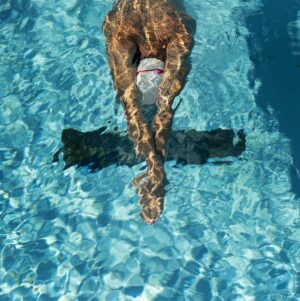Biceps tenodesis is a surgical procedure that aims to treat various conditions related to the biceps tendon. The biceps tendon is responsible for connecting the biceps muscle to the shoulder and elbow joints. When this tendon becomes damaged or inflamed, it can lead to pain, weakness, and limited range of motion. Biceps tenodesis involves reattaching or repositioning the tendon to alleviate these symptoms and restore normal function.
The biceps reflex and its significance.
The biceps reflex, also known as the deep tendon reflex, is a test used by medical professionals to assess the integrity of the nerves in the upper arm. It involves tapping the biceps tendon with a reflex hammer, which causes a contraction of the biceps muscle. This reflex is controlled by the C5 and C6 nerve roots in the spinal cord. If the reflex is absent or diminished, it may indicate an underlying nerve injury or compression.
The biceps reflex is an important diagnostic tool in evaluating conditions such as nerve impingement, spinal cord injuries, or neurological disorders. It provides valuable information about the functioning of the nerves that supply the biceps muscle. However, it should be noted that the absence of the reflex does not necessarily confirm a specific diagnosis, as other factors need to be considered in conjunction with clinical findings.

Biceps vs triceps: Understanding the role of these muscles.
The biceps and triceps are two major muscle groups in the upper arm with distinct functions. The biceps muscle is located in the front of the upper arm and is responsible for flexing the elbow joint and supinating the forearm. It is comprised of two heads: the long head and the short head. The triceps muscle, on the other hand, is located at the back of the upper arm and is responsible for extending the elbow joint.
While the biceps and triceps muscles have opposing actions, they often work together to provide stability and control during movement. For example, when performing a bicep curl, the biceps contract to flex the elbow joint, while the triceps contract to stabilize the arm. Understanding the coordinated function of these muscles is essential in diagnosing and treating conditions that affect the upper arm, such as biceps tendonitis or biceps tenodesis.
Do pushups work the biceps?
Pushups primarily target the muscles of the chest, shoulders, and triceps. However, they also engage the biceps to a lesser extent. During a pushup, the biceps act as stabilizers, supporting the movement of the shoulder joint. While pushups alone may not provide significant bicep muscle growth, they can contribute to overall arm strength and stability.
To specifically target the biceps, exercises such as bicep curls or hammer curls are more effective. These exercises isolate the biceps and allow for greater muscle activation and hypertrophy. However, incorporating pushups into a well-rounded workout routine can still provide benefits for the biceps, as they contribute to overall upper body strength and endurance.

Common biceps injuries: Biceps tendonitis and its treatment.
Biceps tendonitis is a common injury that occurs when the biceps tendon becomes inflamed or irritated. This can be caused by overuse, repetitive motions, or direct trauma. Common symptoms of biceps tendonitis include pain, tenderness, and swelling in the front of the shoulder or upper arm. Treatment for biceps tendonitis typically involves a combination of rest, ice, physical therapy, and anti-inflammatory medications.
In more severe cases, where conservative treatments fail to provide relief, biceps tenodesis may be recommended. Biceps tenodesis involves surgically reattaching the biceps tendon to a different location on the arm or shoulder. This procedure helps alleviate pain and restore function by reducing tension on the tendon. Biceps tenodesis is often considered when other treatment options have been exhausted or when there is significant damage to the biceps tendon.
Short vs long biceps: Debunking the debate.
The debate between short and long biceps refers to the anatomical variation in the length of the biceps muscle. Some individuals have a shorter biceps muscle belly, while others have a longer muscle belly. This anatomical difference has led to discussions regarding the impact on muscle function and performance.
While the length of the biceps muscle may vary among individuals, it does not significantly affect strength or muscle function. Both short and long biceps can generate similar levels of force and contribute to similar movements. The difference in muscle length is primarily a result of genetic variation and does not have a significant impact on athletic performance or muscle development.
Biceps tenodesis vs biceps tenotomy: Which is the better option?
When considering treatment options for biceps tendon injuries, two common surgical procedures are biceps tenodesis and biceps tenotomy. Biceps tenodesis involves reattaching the biceps tendon to a different location, while biceps tenotomy involves completely cutting the tendon. The choice between the two procedures depends on various factors, including the severity of the injury, age of the patient, and desired post-operative function.
In general, biceps tenodesis is preferred over biceps tenotomy, as it provides better long-term stability and preserves muscle function. Biceps tenodesis allows for continued engagement of the biceps muscle, maintaining strength and stability in the upper arm. On the other hand, biceps tenotomy may lead to a cosmetic deformity known as a “Popeye” deformity, where the muscle retracts and creates a bulge in the upper arm. However, in certain cases where the biceps tendon is severely damaged or irreparable, a biceps tenotomy may be the only viable option.

Rehabilitation exercises for biceps tenodesis.
After undergoing biceps tenodesis surgery, rehabilitation exercises play a crucial role in the recovery process. These exercises help restore strength, range of motion, and stability in the affected arm. It is important to follow the guidance of a qualified physical therapist or healthcare professional when performing these exercises to ensure proper technique and progression.
Rehabilitation exercises for biceps tenodesis typically involve a combination of stretching, strengthening, and functional movements. Initially, gentle range of motion exercises and stretching are introduced to prevent stiffness and improve joint mobility. As healing progresses, resistance exercises are incorporated to gradually strengthen the biceps and surrounding muscles. Functional movements, such as lifting and carrying objects, are gradually reintroduced to restore everyday arm function.
Post-surgery care and recovery for biceps tenodesis.
After biceps tenodesis surgery, proper post-operative care is essential for successful recovery. This includes following specific instructions provided by the surgeon or healthcare team. Some common post-surgery care guidelines for biceps tenodesis may include:
- Rest and immobilization: Initially, a sling or brace may be provided to immobilize the arm and protect the surgical site. It is important to avoid excessive movement or strain during the initial healing phase.
- Pain management: Pain and discomfort are common after surgery. Medications or other pain management techniques may be prescribed to help alleviate these symptoms.
- Physical therapy: Rehabilitation exercises are a critical component of the recovery process. Working with a physical therapist can help optimize healing, restore strength, and improve overall function.
- Gradual return to activity: Depending on the individual’s progress, a gradual return to daily activities, work, and sports may be advised. It is important to follow the recommended timeline and avoid overexertion or activities that may strain the surgical site.
Conclusion
Biceps tenodesis is a surgical procedure that offers a solution for individuals experiencing biceps tendon injuries or conditions. Understanding the role of the biceps muscle, the significance of the biceps reflex, and the differences between biceps tenodesis and biceps tenotomy is crucial in making informed decisions regarding treatment options. While the debate between short and long biceps exists, it does not significantly impact muscle function or performance. Rehabilitation exercises and proper post-surgery care are essential for successful recovery and restoration of normal arm function. By following medical advice and guidance, individuals can regain strength, alleviate pain, and improve overall quality of life after undergoing biceps tenodesis.


